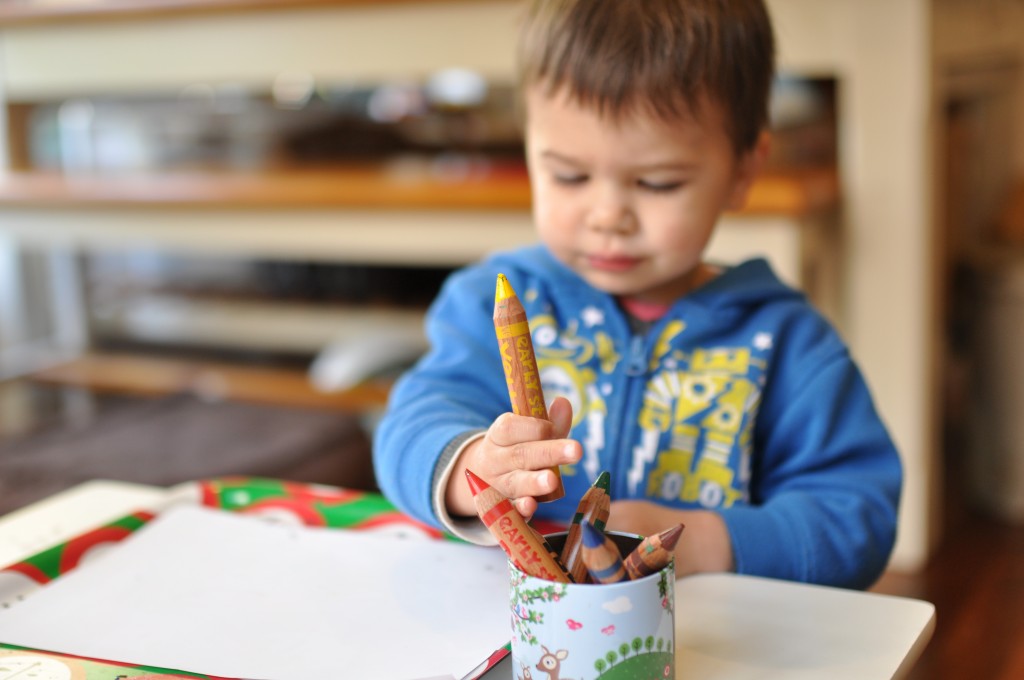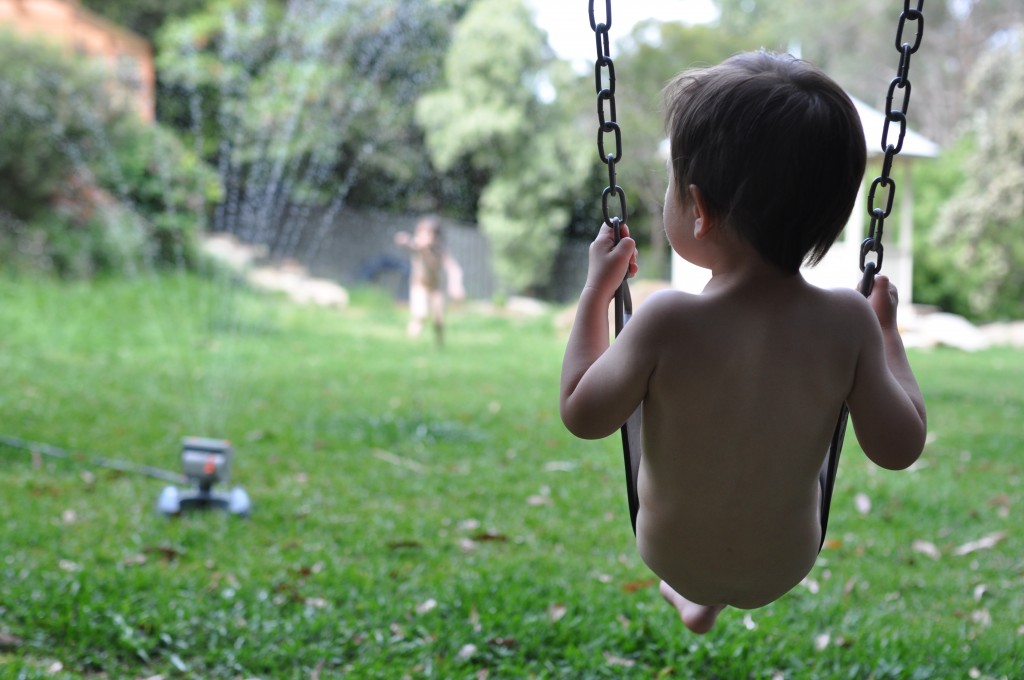This is a really common question that I get asked by first time parents. They want to know when their child can start to explore drawing and how to help foster this skill. Creating something is very exciting for both the parent and child. The child gets to leave his “mark on the world” for the first time which also gives the parent something tangible that their child made as well (besides dirty nappies, of course!)
It is important to remember that all children grow at their own individual rate and the same is true for skill development. The timelines that I provide are just a guide, but will give you an idea of what to expect as your child develops.
Professionals like myself that research development define the evolution of a child’s drawing abilities into stages:
- Scribbling: This beings as random scribbles around 15 months of age and are more about the child experimenting with the tool (crayon) and the movement of his hand.
- Controlled Scribbling: As the child begins to gain more control of his movements, builds muscle strength and improves his coordination, his marks on the paper will look more uniform. Circles and swirls are very popular as they are natural movements for the hand to make. In time the end of the circles drawn will come closer together and eventually the child will master drawing a closed circle. The child will also enjoy making straight and wavy lines in various directions. Controlled scribbling is generally observed between 2 to 3 years of age.
- Patterns and Symbols: As the child approaches 3 years of age he begins to realise that the marks that he makes can actually represent something and have meaning. The child begins to draw patterns which are imitations of what he has seen previously. These will evolve into the creation of symbols, which represent what the child is thinking. Of course, we may not understand the message he is conveying but it is not about that–it is all about the process as your child continues to test his skills and communicate in a new way. During this time you will notice the child will make the same pattern repetitively (often accompanied with great excitement!)
- Around 3-5 years of age the child will begin to draw more purposefully and with great thought and planning. Previously, the child may have chosen a crayon at random to colour, but now the child will choose one that best suits what it is he is trying to represent, such as yellow for the sun or green for grass. More details will also be seen in their creations: a circle that once in its entirety represented mum (a one-part person) may now sit on top of an oval for a body and perhaps now have lines for arms and legs.
Encourage your child to explore the world of drawing by having the proper resources available. When you first begin make it simple. Have a tray with a sheet of paper and one chunky red crayon. Choose red because it is one of the first colours most visible to children. Sit next to your child at his small table and make a horizontal line. If he doesn’t seem too interested you can make a sound while you do it such as ,”Zip!” Children really like this and they generally will want to grab the crayon and imitate you. Once he seems confident in what he is doing, allow him to freely explore the crayon and paper. It most likely will turn into sensory exploration as well and he might crumble the paper, smell the crayon or put it in his mouth. Let him do all of this. However, if the behavior becomes destructive or unsafe, simply remind the child softly that crayons are used for drawing and offer another piece of paper.
Always remember it is about the process! There is no need to praise his accomplishment or question what he created. None of that matters and your child certainly needs no praise. All he wants is to know that he is doing the work appropriately with the hope that he will be able to return to it again and again. Make sure that leave his drawing tray out so that he can revisit it when ever he feels like it. Having a new “work tray” in the house will be really exciting for him and offers another choice in his environment.
As your child becomes more mastered in his skills, offer other creative media such as chalk, finger paint or a paint brush. Varying what is used will appeal to him and offer different texture to explore.
Most importantly, just let him enjoy it! The first drawing is always a precious moment so soak it up.
With gratitude,
Megan xx







